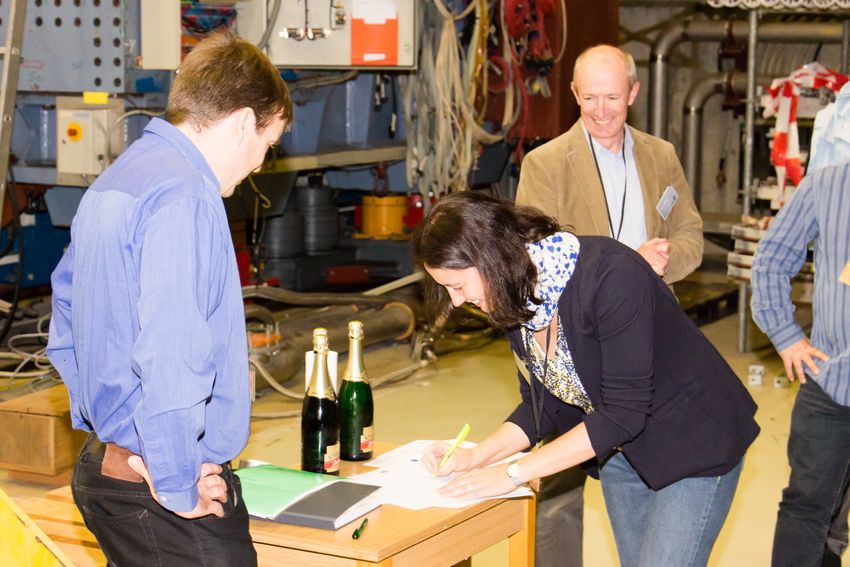Recent years have seen a dramatic improvement of sensitivity of experiments looking for interactions of dark matter with normal matter. The sensitivity of experiments at the European Organization for Nuclear Research CERN on such particles has also greatly improved in recent years.
However, such particle candidates have not been found in exeriments so far. This leads to the resurgence of a long-established hypothesis that was introduced independently of the dark-matter problem in order to solve another fundamental problem of particle physics: the question of the unexplained symmetry between matter and antimatter in the strong interaction, also known as quantum chromodynamics (QCD). This hypothesis predicts the existence of so called axions that could also solve the dark-matter problem.
There are several experiments and initiatives that search for axions as dark-matter candidates. None of these experiments, however, is sensitive to axions in the mass range between 40 and 400 microelectronvolts. This mass range is predicted in models assuming that axions were produced after the inflationary phase of the universe.
In 2013, an idea was published that could make it possible for experiments to become sensitive enough in this theoretically well motivated mass range to detect dark matter axions. For this purpose, up to 80 discs from a material with a high refractive index with a diameter of one meter are to be placed into a magnetic field with a strength of about 10 Tesla. With the correct adjustment of the disc spacings this could result in resonant conversion of axions into microwaves (photons). These could then be detected with extremely sensitive detectors.
Scientists from several research institutes have joined to facilitate such an experiment: On October 18, 2017, the MADMAX Collaboration was officially formed. Apart from the group at the Max Planck Institute for Physics, where the basic concept has been developed, the MADMAX collaboration consists if research groups of the universities of Aachen, Hamburg and Tübingen, the University of Zaragoza in Spain, the French Research Institute for Fundamental Laws of the Universe CEA-IRFU in Saclay and Deutsches Elektronen Synchrotron (DESY) in Hamburg.
The researchers of the newly founded MADMAX collaboration are planning a finding phase in which they plan to very that the concept is feasible: the theoretical-phenomenological considerations that led to the concept have to be critically questioned. Parallel to these, first design studies on the feasibility of a suitable magnet and the necessary mechanics are carried out.
If these studies turn out satisfactory, a smaller prototype of the experiment will be built by 2021. Already this setup might provide a sensitivity, which allows scientists to search for previously untestable exotic dark matter particles.
With the final stage of the MADMAX experiment it should then be possible to cover an important parameter range for axions, which is predicted if axions are the dark matter.
The MADMAX experiment is planned to be mounted at DESY in Hamburg.
